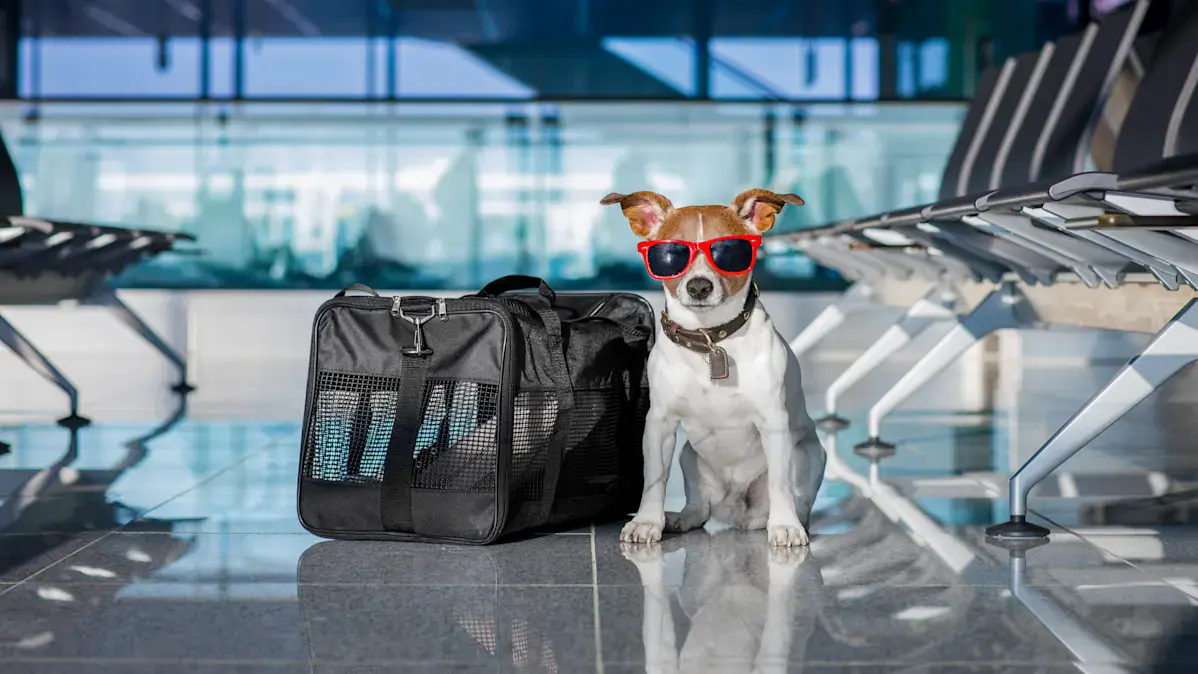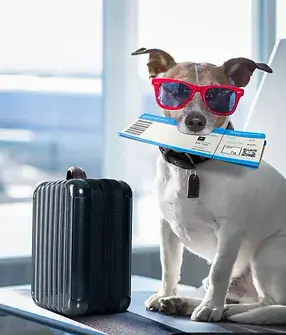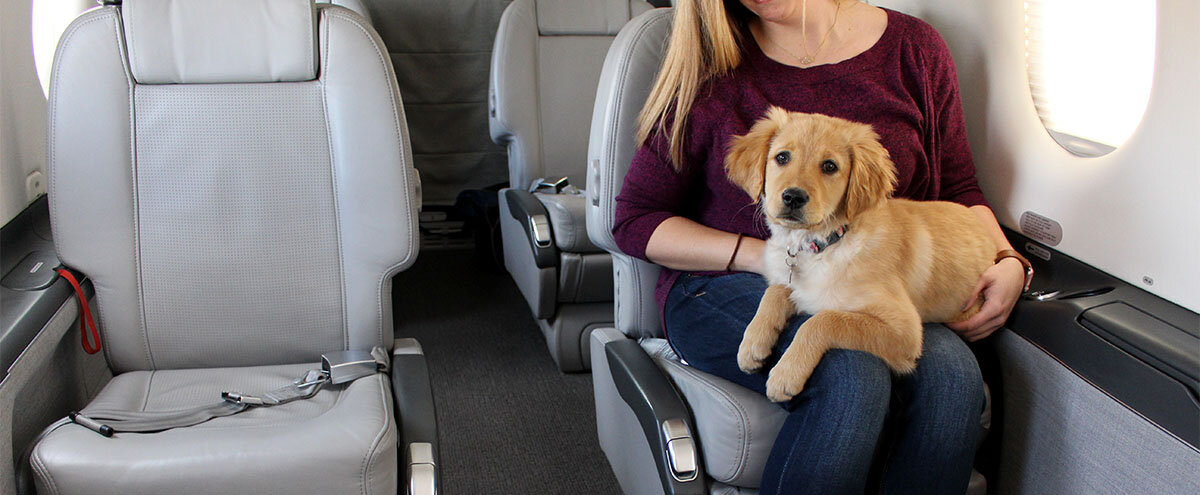
Traveling with pets has become an increasingly popular option for many pet owners as they seek to share their adventures with their furry companions. The thought of leaving your pet behind can be heartbreaking, but fortunately, traveling with pets on airlines is now easier than ever. Whether you're flying for a vacation, relocating, or visiting family, bringing your pet along can be a rewarding experience for both of you. However, navigating the complexities of air travel with pets can be challenging if you're not prepared.
In this comprehensive guide, I will walk you through the essential steps to ensure a smooth journey with your pet, highlighting the things you need to know about airline policies, preparation, and tips for keeping your pet safe and comfortable during the flight.
The first step in planning a trip with your pet is to thoroughly research the pet travel policies of the airline you’ll be flying with. Every airline has different rules regarding pets, including fees, sizes, and specific requirements for traveling with animals. Here are some of the key factors to consider:

Most airlines allow pets like dogs, cats, and rabbits to travel with their owners. However, exotic animals (such as reptiles or birds) may not be allowed, or they may require special handling.
Airlines often have specific size restrictions for pet carriers. Most airlines require pets to fit inside a carrier that can be stowed under the seat in front of you for in-cabin flights. These carriers must be well-ventilated and secure, with enough room for your pet to turn around comfortably.
Pets can typically travel in two classes—in-cabin or cargo.
In-cabin travel is usually available for smaller pets (typically under 15-20 pounds, including the carrier).
Cargo or cargo hold travel is reserved for larger pets or those that exceed the in-cabin weight limit.
Make sure to check if your pet qualifies for in-cabin travel, as this is often the most comfortable option for them. If your pet must travel in the cargo hold, it’s essential to choose an airline with a good reputation for handling animals and to prepare your pet for the journey.
Airlines have limited space for pets, especially in the cabin, and it’s crucial to book early to secure a spot. Some airlines only allow a small number of pets per flight, and if you wait too long, the flight might already be fully booked for pet travel.

Many airlines require that pets have a recent health certificate from a veterinarian, proving that they are fit for travel. Check the airline’s documentation requirements in advance, as regulations can vary depending on the destination (domestic or international) and the airline.
Once you've secured your pet’s travel spot, the next crucial step is preparing them for the journey. Preparation can help reduce anxiety and ensure that your pet is comfortable throughout the process.
Visit the Veterinarian: A visit to the vet is essential before traveling. You’ll want to make sure your pet is healthy enough for travel and update any necessary vaccinations. Some airlines require a health certificate dated within 10 days of travel. Discuss any concerns you may have, especially if your pet has any anxiety issues related to travel.
Check for Pet Insurance: If your pet has health issues or might require emergency care during the trip, consider purchasing travel insurance for your pet. Many travel insurance plans offer coverage for veterinary emergencies, trip cancellations due to pet illness, or even if your pet gets lost during the flight.
Desensitize Your Pet to the Carrier: If your pet isn't accustomed to being in a carrier, start by introducing them to it well in advance. Make the carrier a comfortable and inviting space, leaving it open in your home and placing their favorite blanket or toy inside. Take short trips in the carrier to help your pet get used to the confinement.
Exercise Before the Flight: Exercise your pet before the flight to help them burn off excess energy. A tired pet will be more likely to relax during the journey. However, avoid feeding them a large meal right before the trip to prevent motion sickness.
Include familiar items in the carrier, like a favorite blanket or a toy, to help your pet feel secure. The scent of home can be comforting to a nervous traveler.
Airports can be overwhelming, and navigating them with a pet requires careful planning. From security checks to boarding, here's how to manage your pet during the airport experience.
Arriving Early: Plan to arrive at the airport at least two hours before your flight, especially if you're flying with a pet. This will give you ample time to check in, go through security, and handle any last-minute pet preparations.
At security, you will likely be required to remove your pet from the carrier and walk them through the metal detector while the carrier is scanned separately. Be sure to keep your pet on a leash and under control at all times. Some airports have pet relief areas, so check if there’s one nearby to give your pet a bathroom break before the flight.
Many airports now offer pet relief stations, which are small, enclosed areas designed for pets to relieve themselves. Make use of these facilities, especially if you have a longer layover or your pet has special needs.
Checking in with Pet: When you check in at the airline counter, notify the agent that you're traveling with a pet. They may provide special instructions or tags to ensure your pet’s safety and comfort during the flight.
Airports can be stressful for both you and your pet. Try to stay calm and reassure your pet with gentle words and petting. Your pet will pick up on your energy, and your calm demeanor can help them feel more at ease.
Once you’re on the plane, the real challenge begins—keeping your pet comfortable throughout the journey.
In-Cabin Travel Tips:
Comfortable Carrier: Ensure the carrier fits well under the seat in front of you and that your pet has enough space to sit or lie down comfortably. Place a familiar blanket or towel inside to create a cozy environment.

Provide water for your pet before the flight, but avoid giving them too much just before departure to prevent bathroom accidents. Some airlines will allow you to bring small amounts of water, but be sure to ask the flight attendants if this is permitted.
Food: It’s typically not advisable to feed your pet right before or during the flight to prevent upset stomachs. Stick to feeding your pet a few hours before departure.
If your pet is prone to anxiety, talk to your veterinarian about possible solutions, including natural calming remedies or medications that might help your pet stay relaxed. Bringing along a calming collar or a pheromone spray designed for pets can also help reduce stress.
Ensure your pet’s carrier has enough ventilation, but avoid placing it directly under an air vent. Airlines often regulate cabin temperatures, but you can use a blanket to keep your pet warm if needed.
Upon arrival, you’ll need to pick up your pet from the designated area, which may differ depending on the airline and whether your pet traveled in the cabin or cargo.

If your pet traveled in the cabin, you’ll simply take them out of the carrier as soon as you’re allowed. Remember to give them a break to stretch their legs and offer water.
If your pet traveled in the cargo hold, follow the airline’s instructions on where and how to pick them up. Pet cargo areas are often located separately from passenger baggage claim, and pets are typically delivered to a designated area.
After the flight, give your pet time to readjust. They may be tired, disoriented, or even a bit anxious. Provide them with their usual food, water, and bathroom breaks. If your pet shows signs of distress or discomfort, contact a veterinarian as soon as possible.
If you're traveling internationally with your pet, there are additional rules and requirements to consider, including vaccinations, quarantine regulations, and specific documentation for entry into different countries.
Different countries have their own regulations for bringing pets in, including mandatory vaccinations (such as rabies) and health certificates. Research the requirements of your destination well in advance to ensure that you comply with all rules.
Quarantine: Some countries may require pets to be quarantined for a period upon arrival. Be sure to check this ahead of time to avoid surprises.
Be Prepared for the Unexpected: While we hope for smooth travels, it’s always a good idea to prepare for the unexpected. Have a list of emergency contacts, including your vet and the nearest emergency animal clinic at your destination.
Not all pets are suited for air travel. Consider the temperament, health, and size of your pet before deciding to fly. Pets that suffer from extreme anxiety or have respiratory problems may have a harder time on airplanes.
Research airlines with pet-friendly policies, as they are more likely to have experience in managing the needs of traveling animals. Airlines that offer great customer service for pets can make a huge difference in your travel experience.
Traveling with pets by air can be a wonderful way to share adventures with your animal companion, but it does require careful planning and consideration. By understanding the airline policies, preparing your pet, managing the airport experience, and ensuring your pet’s comfort during the flight, you can make the journey as smooth as possible.
With a little extra effort and care, your pet will have an enjoyable flying experience, and you can focus on creating memories together at your destination. Safe travels!
